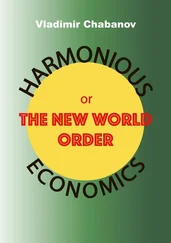The Third World debt crisis and the end of the Third World Industrial Revolution
The most lasting legacy of the high interest rate policy in the US in the late 1970s and the early 1980s – sometimes called the Volcker Shock, named after the then chairman of the US central bank (the Federal Reserve Board) – was not in the US but in the developing countries.
Most developing countries had borrowed heavily in the 1970s and the early 1980s, partly to finance their industrialization and partly to pay for the more expensive oil, following the Oil Shocks. When the US interest rates doubled, so did international interest rates, and this led to a widespread default on foreign debts by developing nations, starting with the default of Mexico in 1982. This is known as the Third World Debt Crisis, thus known because the developing world was then called the Third World, after the First World (the advanced capitalist world) and the Second World (the socialist world).
Facing economic crises, developing countries had to resort to the Bretton Woods Institutions (the IMF and the World Bank, just to remind you). The BWIs made it a condition that borrowing countries implement the structural adjustment programme(SAP), which required shrinking the role of the government in the economy by cutting its budget, privatizing SOEs and reducing regulations, especially on international trade.
The results of the SAP were extremely disappointing, to say the least. Despite making all the necessary ‘structural’ reforms, most countries experienced dramatic growth slowdown in the 1980s and the 1990s. Per capita income growth rates in Latin America (including the Caribbean) collapsed from 3.1 per cent in 1960–80 to 0.3 per cent in 1980–2000. In Sub-Saharan Africa (SSA), per capita income fell during this period; in 2000, it was 13 per cent lower than in 1980. The result was an effective arresting of the Third World Industrial Revolution, which is the name that Ajit Singh, the Cambridge economist, used in order to describe the economic development experience of developing countries in the first few decades following decolonization.
Only Chile did well out of neo-liberal policies of the 1980s and the 1990s, but at considerable human cost under the Pinochet dictatorship (1974–90). [58] It should, however, be noted that the Chilean government has had an important role in the economy even in the country’s neo-liberal phase. CODELCO, the largest copper mining company in the world, which had been nationalized in 1971 by the left-wing Allende government, was kept under state ownership. A number of public and semi-public agencies (such as Fundación Chile) have provided its agricultural producers with subsidized technical consultancy and export marketing help.
All the other success stories of this period were economies that used state intervention extensively and liberalized only gradually. The best examples of this were Japan, the ‘tiger’ (or ‘dragon’, depending on your animal preference) economies of East Asia (South Korea, Taiwan and Singapore) and, increasingly, China.
The wall comes crashing down: the collapse of socialism
Then, in 1989, a momentous change happened. That year, the Soviet Union started to unravel, and the Berlin Wall was torn down. Germany was reunited (1990), and most Eastern European countries abandoned communism. By 1991, the Soviet Union itself was dismembered. With China gradually but surely opening up and liberalizing since 1978 and with Vietnam (unified under the Communist rule in 1975) also adopting its ‘open door’ policy (Doi Moi) in 1986, the socialist bloc was reduced to a few die-hard states, notably North Korea and Cuba.
The problems with the socialist economies were already well known: the difficulty of planning an increasingly diverse economy, incentive problems arising from weak links between performance and reward and widespread politically determined inequality in an ostensibly equal society (see Chapter 9). But few, including the most anti-socialist commentators, had thought that the bloc would implode so quickly.
The ultimate problem was that the Soviet bloc economies had tried to build an alternative economic system based on essentially second-rate technologies. There were, of course, areas like space and arms technologies where they were leading the world (after all, in 1957 the Soviet Union put the first ever man in space), thanks to the disproportionate amount of resources poured into them. However, when it became evident that it could only offer its citizens second-rate consumer products – as symbolized by Trabant, the East German car with plastic body, which quickly became a museum piece after the fall of the Berlin Wall – the citizens revolted.
In the next decade or so, the socialist countries in Eastern Europe made a headlong dash to transform themselves (back) into capitalist ones. Many thought that the ‘transition’ could be made quickly. Surely, it was just a matter of privatizing SOEs and reintroducing the market system, which is after all one of the most ‘natural’ human institutions? Others added that the transition had to be made quickly, in order not to give time to the old ruling elite to regroup itself and resist change. Most countries adopted ‘Big Bang’ reforms, trying to bring capitalism back overnight.
The result was nothing short of a disaster in most countries. Yugoslavia disintegrated and descended into wars and ethnic cleansing. Many former republics of the Soviet Union experienced deep depressions. In Russia, the economic collapse and the resulting unemployment and economic insecurity caused so much mental stress, alcoholism and other health problems that it is estimated that millions more people died than would have been the case if the pre-transition trends had continued. [59] S. Basu and D. Stuckler, The Body Economic: Why Austerity Kills (London: Basic Books, 2013), Chapter 2, for further details and analyses.
In many countries, the old elite simply ‘changed their suits’ and transformed themselves from party apparatchiks into businessmen, enriching themselves hugely by acquiring state assets at knock-down prices through corrupt practices and ‘insider dealings’ in the privatization process. The Central European countries – Poland, Hungary, the Czech Republic and Slovakia – fared better, especially after they joined the European Union in 2004, thanks to being more gradualist in their reform and to their better skill bases. But even in the case of these countries, it is difficult to hail the transition experience as a great success.
The fall of the socialist bloc ushered in a period of ‘free-market triumphalism’. Some, such as the American (then) neo-con thinker Francis Fukuyama, pronounced the ‘end of history’ (no, not the end of the world) on the grounds that we had finally conclusively identified the best economic system in the form of capitalism. The fact that capitalism comes in many varieties, each with particular strengths and weaknesses, was blissfully ignored in the euphoric mood of the day.
One world, ready or not: globalization and the new world economic order
By the mid- 1990s, neo-liberalism had spread throughout the world. Most of the old socialist world had been absorbed into the capitalist world economy, either through the ‘Big Bang’ reforms or, as in the case of China and Vietnam, through gradual but constant opening up and deregulation. By this time, market opening and liberalization had also progressed considerably in most developing countries. In most countries, this happened rapidly due to the SAP, but there were some others where it happened more gradually through voluntary policy changes, such as in India.
Читать дальше












